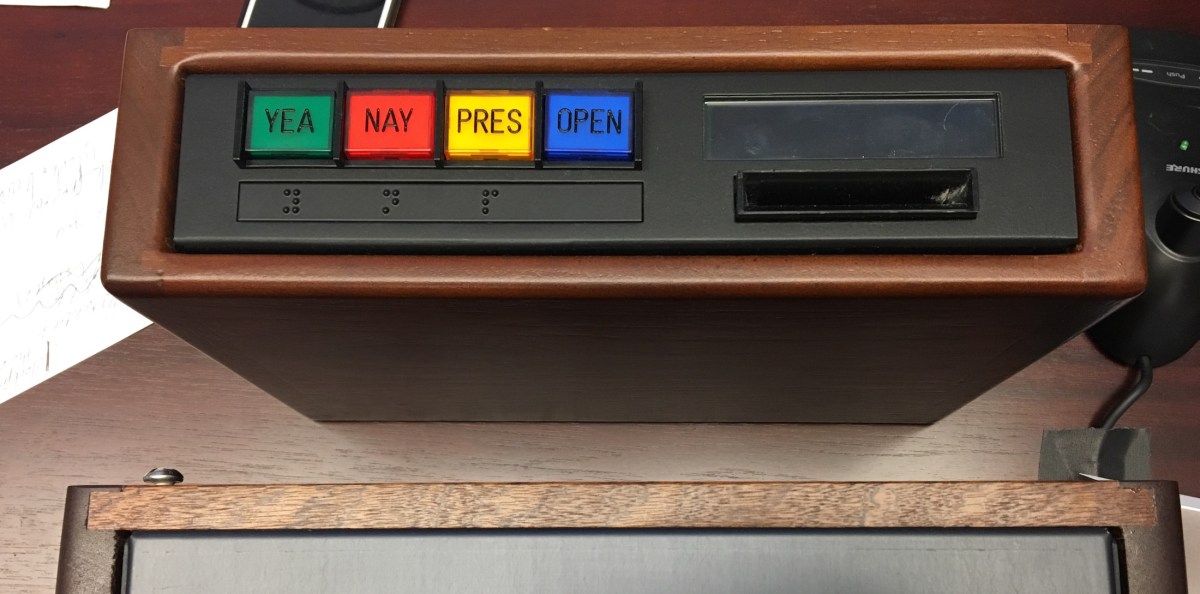The House got a brand new electronic voting system this summer

Since August, members of the House of Representatives have been recording their votes from snazzy new electronic voting machines on the House floor.
“Every component inside the new one is new,” Robert Reeves, deputy clerk of the House, told the audience of a Bulk Data Task Force meeting at the Cannon House office building Thursday.
“We actually started this project about three years ago,” Reeves said. And now, after two years in development, the machines are “completely remodeled.”
That said, a passing glance at the machines wouldn’t show too many glaring differences. In fact, the newest edition even looks shockingly similar to the original machines developed in 1972. Reeves readily admits this — “as you can see they’re very, very similar,” he said, showing both an old and new machine to the audience.
The most meaningful differences, Reeves said, are on the inside, where it “functions differently than it used to.”
Most of the internal hardware changes came from a place of wanting to make sure the machines are easier and more cost effective to maintain, Reeves said. Longevity is particularly important — the old machines were in operation for 20 years, Reeves told FedScoop, and he expects a similar lifespan out of the new ones.
A few of the changes, however, do show up on the outside. And those changes are mostly there to augment representatives’ user experience. There’s a new LCD panel above the card slot, for example, that shows the Representative’s name when they insert their personal voting card — or “invalid card” in the event that they’ve mistakenly used a library card, credit card or old voting card.
There’s also some rudimentary braille under the voting buttons. “In the last two elections, not this one, we did have sight-impaired candidates,” Reeves said. “So what we did is we did put a braille plate underneath the buttons” — Y for yea and N for nay. The design choice is an attempt to “lean forward,” Reeves said.
Finally, the revamp offered an opportunity to add new vote stations to the floor — two on either side of the aisle for a total of 50 vote stations House-wide.
During the August switch from old to new, “everything went smoothly,” Reeves said. “And so we’re back in operation — we voted, you know, as soon as the members came back and continue to vote since then.”
Electronic voting was first used on the House floor in January 1973. Since then the system has undergone various updates and upgrades.




